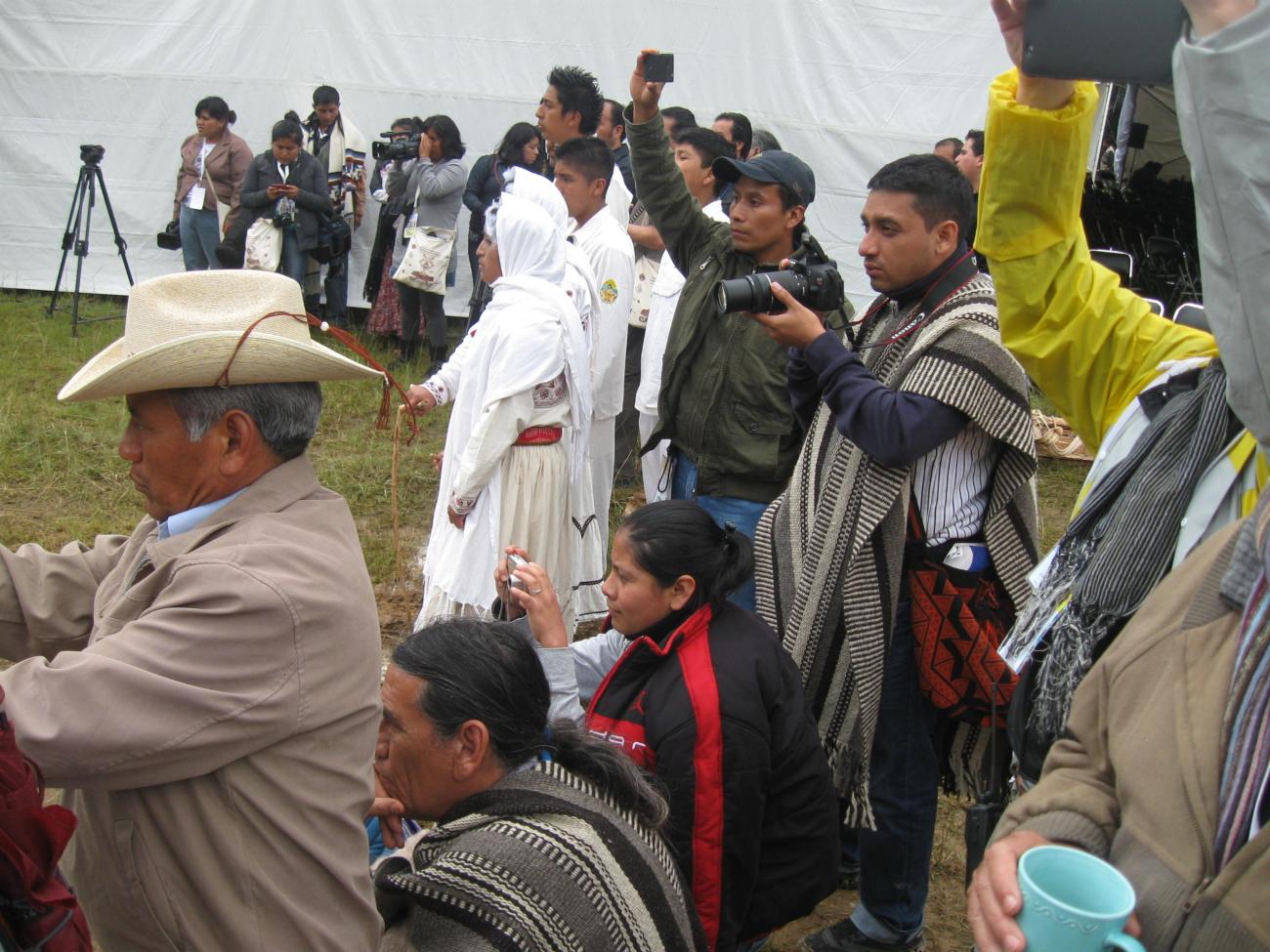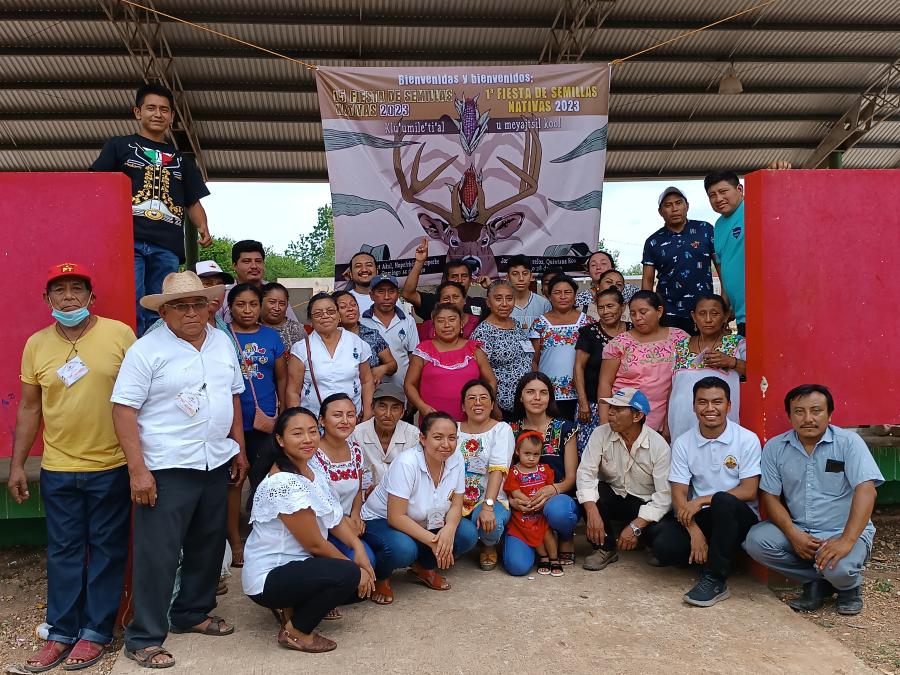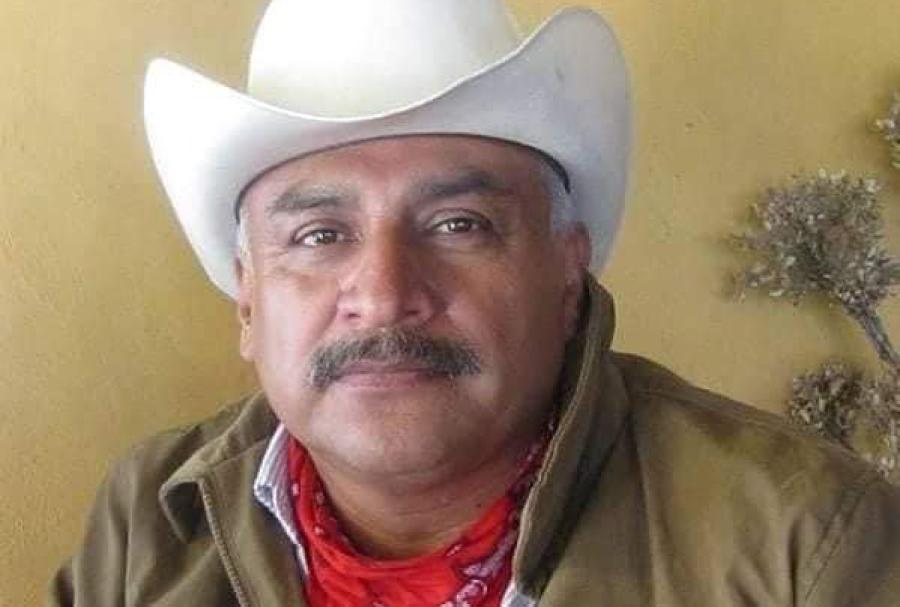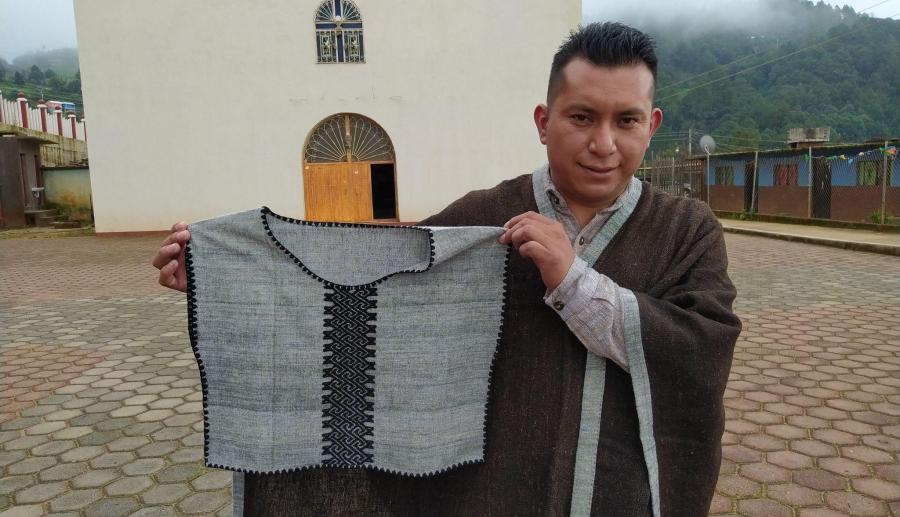
By Cesar Gomez
Recently, Indigenous men and women in the media from various countries on the continent of Abya Yala (North and South America, as it is commonly known) convened in Santa María Tlahuitoltepec, Mixe, Oaxaca, Mexico, to follow up on an initiative that goes straight to the heart of the struggle of Indigenous Peoples. This event, known as the Second Continental Summit on Indigenous Communication of Abya Yala, aimed to strengthen and empower communication among the Indigenous Peoples of Abya Yala through dialogue, exchange, reflection, and proposals.
The Summit took place October 7-13, 2013 and dealt with many issues. These included general principles of Indigenous communication, Indigenous communication defense of land and territory, legislation regarding the media, development of public policy, development of a continent-wide plan for communications training, women in communication, and strategies for international networking.
One important discussion point discussed in the working groups was that, ironically, the more media that exists, the more disconnected we become. Lately Indigenous communicators are promoting a huge number of online newspapers, magazines, radios, and television stations, along with increasingly popular social networks. Yet these are distant from the reality lived by many Indigenous communities. The question is, are these media forms fulfilling the goal of linking communities when many communities live in poverty and technology is inaccessible? It is necessary to redirect the current and use more accessible community-based media to support the rights and struggles of Indigenous Peoples.
A second important issue discussed at the Summit relates to the legal status of community media. There is a reality that cannot be denied: in Latin America, radio and television are concentrated in the hands of transnational corporations, which control each country’s media agenda and put political pressure on the States. This excludes Indigenous Peoples from their right to their own radio frequencies, making them objects rather than subjects of communication.
At the First Continental Summit, which took place in Cauca Department, Colombia, one agenda item that resulted was the need to change domestic legislation on the media to allow Indigenous Peoples equal access. In Mexico during the Second Summit, the topic was addressed again, now in the context of the coming shutdown of analogue systems. In many Latin American countries where analogue frequencies are still used, the system will be changed to digital, which will increase the number of frequencies by 6-8 for every one that currently exists. In countries like Guatemala where governments have denied Indigenous Peoples access to frequencies based on the idea that there were not enough, digitalization will open new possibilities for access to democratize the media.
To put pressure on States to legalize Indigenous community media, continental unity among Indigenous Peoples is fundamental. Indigenous Peoples must demand that our right to communication be respected, and reform is urgent to combat monopolies and oligopolies, especially with the impending digitalization. In Guatemala, the community radio movement, made up of Asocación Muj’babl’yol (Meeting of Expressions) and the Association of Community Radios of Guatemala are pressing for the legislature to pass Bill 4087, the Community Media Law, which has been approved by the Congressional Committee on Indigenous Peoples. However, it has since been shelved and the petitions of the majority have been ignored.
Based on Guatemala’s topography and the economic conditions of its Indigenous Peoples, it is much easier and more affordable to access a radio receptor as opposed to television or internet, which is why Guatemala’s Indigenous Peoples are demanding radio frequencies to run their own community radio stations. International instruments such as the UN Declaration on the Rights of Indigenous Peoples, International Labor Organization Convention 169, the American Convention on Human Rights, and others clearly state that Indigenous Peoples have a right to equal access to communication and information media.
Countries such as Bolivia and Argentina have equally divided their radio and television frequencies into thirds: 33% each for the government, commercial, and non-profit/community sectors. These countries understand that the State serves solely to administer the radio spectrum and that the spectrum is a common good that belongs to all of us.
The Summit was a space for all to strengthen our struggles and our demands. Thus, the Cultural Survival delegation, in the name of the community radio movement, demanded attention to the issue of access to radio frequencies, which is an Indigenous right and which States must provide as a part of our territory without putting economic interests ahead of rights.
It is important to clarify that our life depends on communication. In territories where there is Indigenous media presence, boys, girls, women, men, elders, and traditional leaders broadcast, in their mother tongue, their principles, values, music, and cultures, confronting the rising tide of globalization. Statistics show that each year various Indigenous languages disappear from the world. This makes it even more important that Indigenous Peoples no longer be spectators in communication but rather become protagonists so that through the media, we can spread the knowledge and wisdom of our ancestors.



